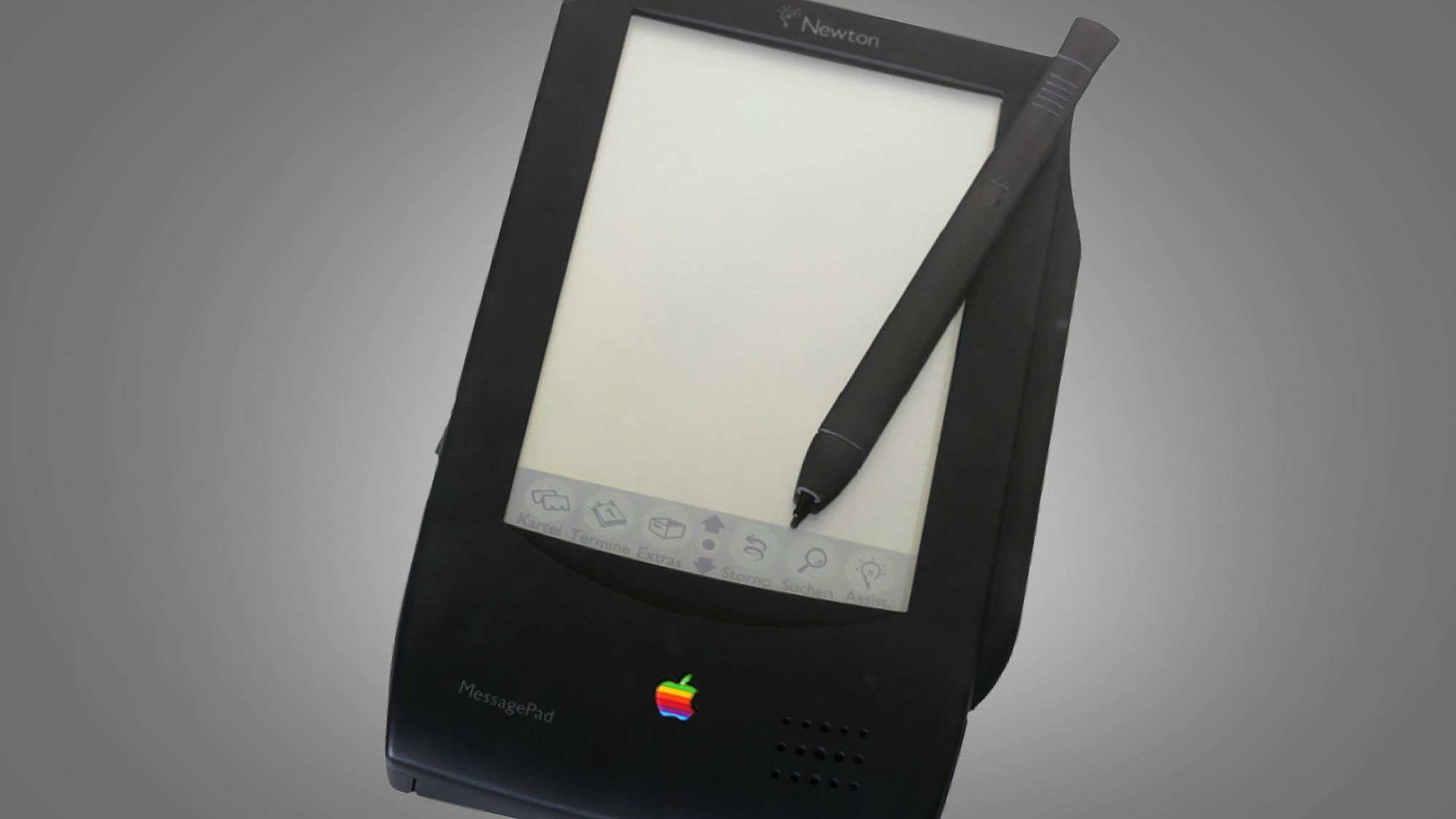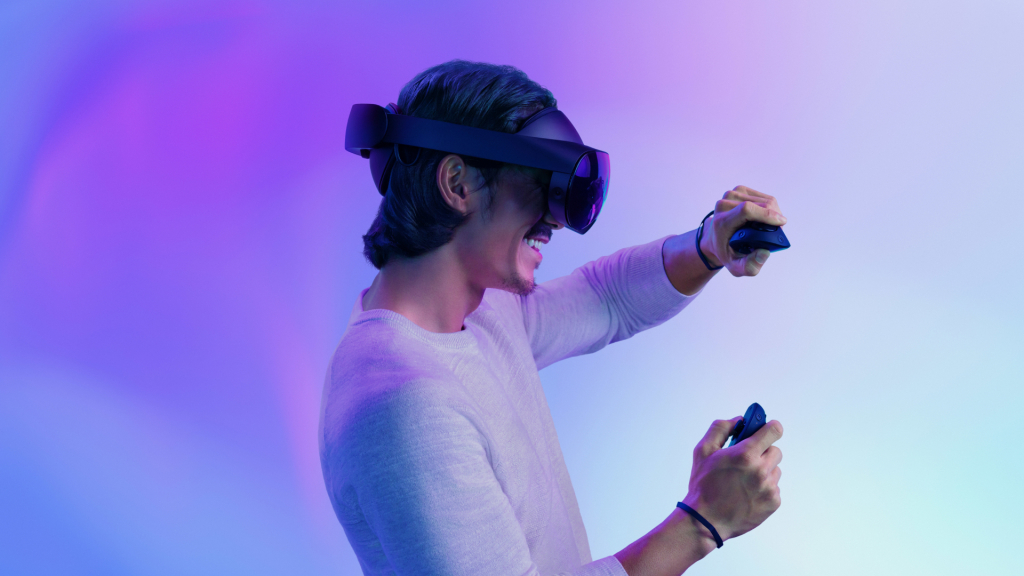Apple’s mixed-reality headset has worrying echoes of the Apple Newton
The rumored headset is apparently dividing opinion at Apple

Apple's long-awaited mixed reality headset looks increasingly likely to launch this year, but a new report suggests a troubled development process that echoes a classic Apple product with a mixed reputation.
The Financial Times suggests that Apple CEO Tim Cook has decided to "press ahead with a debut this year" for a mixed-reality headset, which apparently resembles a pair of lightweight ski goggles, and will blend both AR and VR experiences.
In making this decision, however, Cook has apparently "overruled the early objections from Apple's designers to wait for the tech to catch up with their vision". Given that the Apple VR headset has now apparently been seven years in the making and is "expected to cost around $3,000", it's hard not to hear this speculation and think of the Apple Newton.
Just over 30 years ago, in May 1992, Apple announced a pretty ground-breaking product called the Newton MessagePad, which ushered in a new mobile computing platform called the PDA (or Personal Digital Assistant). The Newton was also in development for six years, bogged down by internal disputes, and was prohibitively expensive at launch (costing $900, or about $1,860 / £1,540 / AU$2,400 at today's prices).

Of course, we have no way of knowing whether or not the fortunes of Apple's headset – rumored to be called the Apple Reality Pro – could ultimately follow the same path as the Newton, which was discontinued in 1997. Apple will certainly do everything to ensure it won't, including launching "a marketing blitz for the new product" (according to the Financial Times).
But the similarities don't end there – the FT also says that Tim Cook is betting on the headset "to secure his legacy", as it's the "first new computing platform to have been developed entirely under his leadership".
Similarly, back in the late 1980s, Apple CEO John Sculley – whose boardroom tussle with Steve Jobs saw the latter acrimoniously leave the company – had steadied Apple and made it profitable again in a similar fashion to Tim Cook, but was looking for an innovative launch that would define the future of computing.
Sign up for breaking news, reviews, opinion, top tech deals, and more.
Like the Newton, Apple's mixed reality headset will be built around innovative new input systems, if the rumors are correct. The Newton's special talent was its handwriting recognition software, which ultimately laid the groundwork for the iPhone. And according to Bloomberg, owners of Apple's AR/VR device will interact with it using their hands and eyes.
But initially, it seems that the headset, which we're expecting to be unveiled at WWDC 2023 in June, will strictly be for well-heeled early adopters. According to the FT, Apple is "only expecting to sell around a million units of its headset in its first 12 months", which is less the the equivalent sales of the iPhone or Apple Watch during their debut year.
Analysis: a reality check for Apple's headset

Apple's mixed-reality headset may ultimately prove to be more of an iPhone-sized success than a cursed Apple Newton, but these reports of a troubled development process only add to the similarities between the devices.
The Financial Times points out that the first versions of new Apple products aren't typically big sellers, and that was particularly the case for the original Apple iPhone and Apple iPod. The latter sold less than five million units in total, which puts predictions of first-year sales of one million units for Apple's AR/VR headset during its first year into perspective.
But none of Apple's previous game-changers this century – the iPhone, Apple Watch, Airpods and iPod – have had a price tag anywhere near as high as the rumored $3,000 for Apple's incoming headset. If that is the price, or close to it, then it will likely be a first-gen product whose ultimate purpose is to plant a flag for a genuinely mass-market gadget.
When the Newton finally arrived in 1993 – over a year on from its first public demo – it was technologically impressive, but its main features, like handwriting recognition, didn't work well enough out of the box. Hence its famous appearance in The Simpsons, when Dolph wrote a note on the Newton to "Beat up Martin', which it duly translated to 'Eat up Martha'.
Clearly, Apple's incoming headset will need to do a better job of living up to the considerable hype that's built over the past few years. We may ultimately get two more Apple AR/VR headsets in 2025, according to respected analyst Ming-Chi Kuo, including a much-needed cheaper model. And those could eventually lead to the Apple Glasses, which the FT says could "take several more years" according to "most in the tech industry".
But the debut device for Apple's xrOS extended reality platform will need to avoid the Newton's pitfalls if it's going to be Apple's next big hit.

Mark is TechRadar's Senior news editor. Having worked in tech journalism for a ludicrous 17 years, Mark is now attempting to break the world record for the number of camera bags hoarded by one person. He was previously Cameras Editor at both TechRadar and Trusted Reviews, Acting editor on Stuff.tv, as well as Features editor and Reviews editor on Stuff magazine. As a freelancer, he's contributed to titles including The Sunday Times, FourFourTwo and Arena. And in a former life, he also won The Daily Telegraph's Young Sportswriter of the Year. But that was before he discovered the strange joys of getting up at 4am for a photo shoot in London's Square Mile.